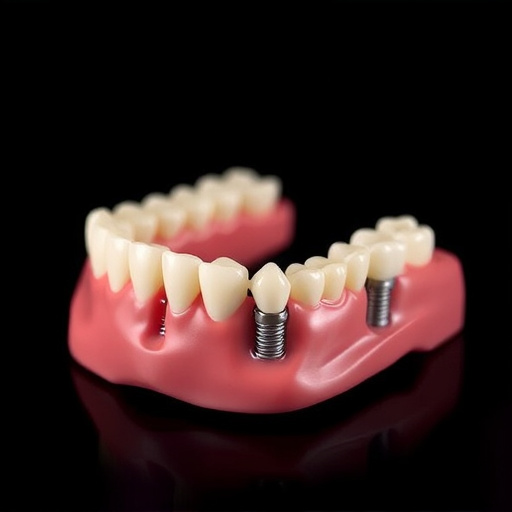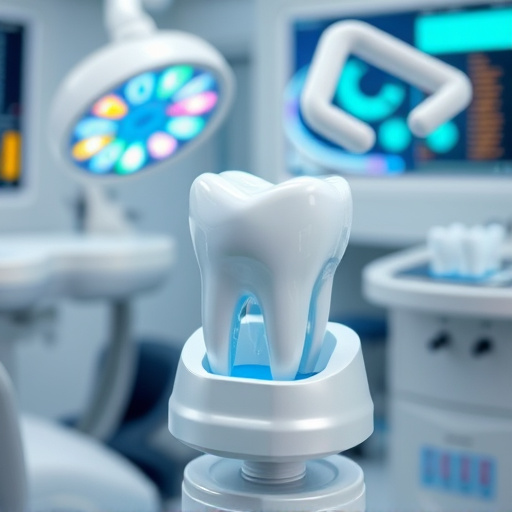Root canal treatment is a dental procedure that saves infected or damaged teeth by removing pulp and replacing it with a filling material. It alleviates pain, prevents bacterial spread, and promotes oral health. The process involves local anesthesia, creating an opening in the tooth, removing infected tissue, irrigating canals, filling them with gutta-percha, and sealing them. Post-care includes maintaining proper hygiene, avoiding hard or sticky foods until healing, and considering dental crown placement for enhanced restoration. Following these guidelines ensures faster recovery and maintains oral health.
Looking for a comprehensive guide on root canal treatment? This step-by-step article breaks down the process, benefits, and post-care instructions. Understanding root canal treatment is crucial for alleviating dental pain and saving teeth. We’ll walk you through each stage, from initial assessment to recovery, ensuring you’re well-informed. Learn why this procedure is often a game-changer in managing tooth infections and preventing further complications.
- Understanding Root Canal Treatment: The Necessity and Benefits
- Step-by-Step Breakdown of the Root Canal Procedure
- Post-Treatment Care and Recovery Guidelines
Understanding Root Canal Treatment: The Necessity and Benefits

Root canal treatment is a dental procedure that involves removing the infected or damaged pulp from the root of a tooth and replacing it with a filling material to restore its function and structure. This treatment is often necessary when the inner part of a tooth, known as the pulp, becomes inflamed or infected due to decay, injury, or cracks. Without proper care and regular dental check-ups, minor issues can escalate into severe pain and potential loss of the affected tooth.
The benefits of root canal treatment extend beyond saving teeth. It provides long-term relief from pain and discomfort associated with infected pulp. By removing the infected tissue, it prevents the spread of bacteria to other parts of the mouth or body. Moreover, this procedure promotes better oral health as part of a broader preventive dentistry approach, alongside regular dental cleanings and check-ups. Unlike commonly perceived, root canal treatment is not painful; modern techniques ensure patient comfort throughout, often comparable to receiving a dental filling in a family dentistry setting.
Step-by-Step Breakdown of the Root Canal Procedure

The root canal treatment process involves a meticulous step-by-step approach to save a tooth with a damaged or infected pulp. Here’s a breakdown:
1. Anesthesia and Preparation: The dentist will first apply local anesthesia to numb the area around the affected tooth, ensuring patient comfort throughout the procedure. After ensuring the patient is relaxed, they’ll prepare the tooth by creating an opening in the top of it to access the inner pulp chamber.
2. Accessing the Pulp Chamber: Using specialized dental tools, the dentist carefully removes any infected or damaged tissue (pulp) from inside the tooth’s root canal system. This process requires precision to ensure all infected material is removed and the canals are cleaned thoroughly.
3. Shaping and Irrigating: Once the pulp chamber is clean, the dentist shapes the walls of the root canal using tiny files, creating a smooth surface. Simultaneously, an irrigation solution, usually containing antiseptic or antibacterial substances, is used to flush out any remaining debris, ensuring the canals are free from infection.
4. Filling and Sealing: After shaping and irrigating, the dentist fills the cleaned root canals with a biocompatible material, typically gutta-percha. This filling material ensures the roots remain sealed, preventing re-infection. A temporary or permanent dental filling may be placed on top to restore the tooth’s structure and function.
5. Restoration and Follow-up: Depending on the tooth’s location and condition, a crown might be recommended to protect the restored root canal tooth. Proper oral hygiene practices and regular checkups are crucial in preventive dentistry, ensuring long-term health for both adult and children’s dentistry patients.
Post-Treatment Care and Recovery Guidelines

After a successful root canal treatment, proper post-care is essential for a smooth recovery and to prevent complications. Patients should adhere to the following guidelines for optimal healing. Firstly, it’s crucial to keep the treated area clean by gently brushing and flossing around the tooth as usual, but avoiding excessive force or pressure on the site. Over-the-counter pain relievers can be taken to manage any discomfort, similar to regular dental procedures.
Additionally, patients should avoid chewing or biting down on the treated tooth for a few days until it has healed adequately. This includes steering clear of hard or sticky foods that might put excessive strain on the area. In some cases, a dental crown might be recommended post-root canal to restore the tooth’s function and appearance, especially in children’s dentistry or for heavily restored teeth. Following these simple steps will ensure a faster recovery, promoting restorative dentistry and maintaining oral health.
Root canal treatment is a meticulous process designed to save teeth, offering both short-term relief from pain and long-term benefits. By understanding the step-by-step procedure and post-treatment care, patients can navigate this crucial dental intervention with confidence. This guide provides a comprehensive roadmap, ensuring individuals are equipped to make informed decisions regarding their oral health and ultimately enhancing their overall well-being.














